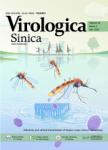Structural Characteristics and Molecular Mechanism of Hepatitis B Virus Reverse Transcriptase
Structural Characteristics and Molecular Mechanism of Hepatitis B Virus Reverse Transcriptase作者机构:State Key Laboratory of Virology Wuhan Institute of Virology Chinese Academy of Sciences Wuhan 430071China
出 版 物:《Virologica Sinica》 (中国病毒学(英文版))
年 卷 期:2009年第24卷第6期
页 面:509-517页
核心收录:
学科分类:07[理学] 08[工学] 09[农学] 071007[理学-遗传学] 090302[农学-植物营养学] 090102[农学-作物遗传育种] 0710[理学-生物学] 1007[医学-药学(可授医学、理学学位)] 1002[医学-临床医学] 1001[医学-基础医学(可授医学、理学学位)] 0903[农学-农业资源与环境] 0901[农学-作物学] 0836[工学-生物工程]
基 金:National Nature Science Foundations of China (30870131) Program of Chinese Academy of Sciences (0802021SA1)
主 题:乙型肝炎病毒 分子机理 结构 特征和 逆转录病毒 逆向 家庭成员 健康问题
摘 要:Hepatitis B virus (HBV), a typical member of the Hepadnaviridae family, is responsible for infections that cause B-type hepatitis which leads to severe public health problems around the world. The small enveloped DNA-containing virus replicates via reverse transcription, and this unique process is accomplished by the virally encoded reverse transcriptase (RT). This multi-functional protein plays a vital role in the viral life cycle. Here, we provide a summary of current knowledge regarding the structural characteristics and molecular mechanisms of HBV RT. Improved understanding of these processes is of both theoretical and practical significance for fundamental studies of HBV and drug discovery.



